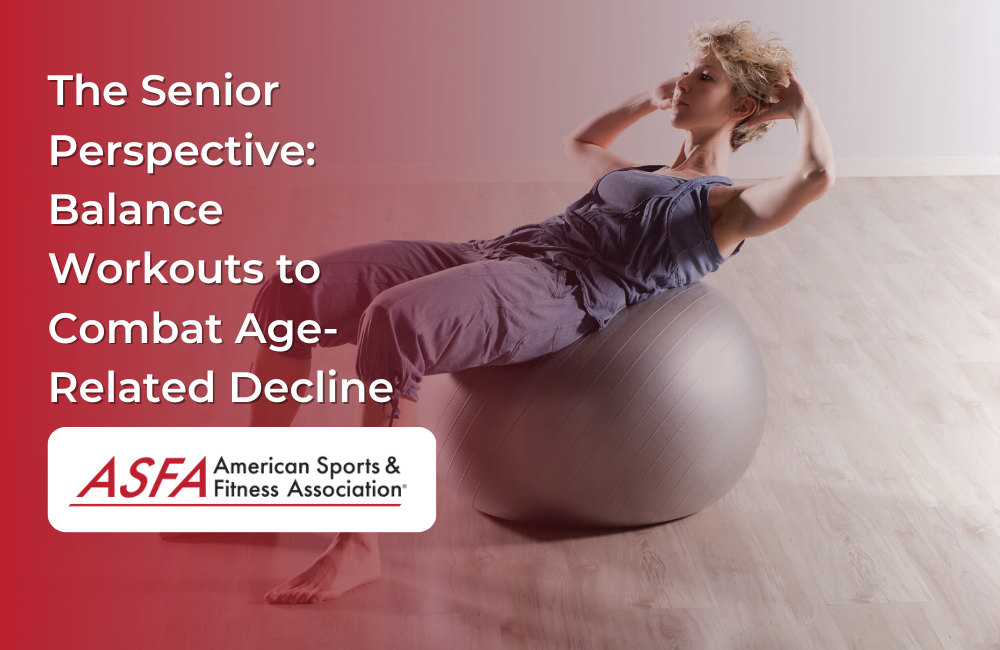As we age, maintaining balance becomes increasingly important for our overall well-being and quality of life. Falls and injuries can have a significant impact on seniors, but the good news is that balance can be improved and maintained through targeted exercise. In this blog, we will explore the senior perspective on balance workouts, the importance of balance for older adults, and practical exercises to combat age-related decline.
Chapter 1: The Age-Related Challenge
1. The Impact of Aging
As we age, our balance naturally deteriorates due to changes in muscle mass, joint flexibility, and sensory perception.
2. Falls: A Common Concern
Falls are a leading cause of injury and hospitalization among older adults, emphasizing the importance of balance training.
3. Quality of Life
Improving balance can enhance mobility, independence, and confidence, enabling seniors to maintain an active lifestyle.
Chapter 2: The Role of Balance Workouts
1. Balance Exercise Benefits
Balance workouts focus on strengthening key muscles, enhancing stability, and improving proprioception.
2. Fall Prevention
Balance exercises reduce the risk of falls by increasing coordination and reaction time.
3. Everyday Functionality
Improved balance translates to better performance in daily activities like walking, standing, and reaching.
Chapter 3: Practical Balance Exercises for Seniors
1. Tai Chi
Tai Chi combines slow, flowing movements with deep breathing and mindfulness, promoting balance, strength, and relaxation.
2. Single-Leg Stance
Standing on one leg for increasing durations improves stability and leg strength.
3. Heel-to-Toe Walk
Walking heel-to-toe in a straight line challenges balance and coordination.
Chapter 4: Chair Exercises
1. Seated Leg Lifts
Sitting in a chair, lift one leg at a time to strengthen the quadriceps and improve balance.
2. Sit-to-Stand
Practicing standing up from a chair enhances lower body strength and stability.
3. Seated Marching
While seated, lift your knees one at a time, engaging the core and improving balance.
Chapter 5: Yoga for Seniors
1. Gentle Yoga
Yoga classes designed for seniors offer a low-impact way to improve flexibility, balance, and relaxation.
2. Balance Poses
Yoga poses like Tree Pose and Warrior III challenge balance and build strength.
3. Mindfulness
Yoga promotes mindfulness, which can enhance body awareness and coordination.
Chapter 6: Water-Based Activities
1. Aquatic Aerobics
Water aerobics classes provide resistance and support for balance exercises.
2. Swimming
Swimming engages multiple muscle groups while minimizing impact on joints.
3. Water Walking
Walking in a pool challenges balance and offers a low-impact workout.
Chapter 7: Progression and Safety
1. Gradual Progress
Start with exercises that match your current ability and gradually increase difficulty.
2. Safety First
Use support like a chair or railing when needed, especially in the early stages of balance training.
3. Consult a Professional
Consider working with a fitness trainer or physical therapist experienced in senior fitness.
Aging Gracefully with Balance
Age-related decline in balance is not inevitable, and seniors can take proactive steps to maintain and improve their stability. Engaging in balance workouts, such as Tai Chi, chair exercises, yoga, and water-based activities, can make a significant difference in fall prevention, mobility, and overall quality of life. So, embrace the journey to better balance and continue enjoying an active and fulfilling life as you age gracefully.





